Search Images
Browse Content (p. 1488)
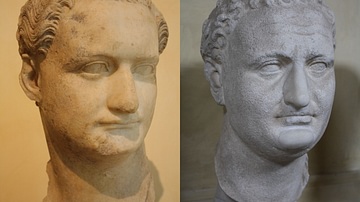
Image
Roman Emperors
Four busts of Roman emperors: Domitian (top left), Titus (top right), Nero (bottom left), Trajan (bottom right).

Image
Female Figurine, Predynastic Egypt
A female figurine from the Predynastic Period in Egypt. Painted terracotta, c. 3500-3400 BCE.
Brooklyn Museum.
![Narmer Palette [Two Sides]](https://www.worldhistory.org/img/c/p/360x202/4412.jpg?v=1744446064-1721384182)
Image
Narmer Palette [Two Sides]
The Narmer Palette, Egypt, c. 3100 BCE. The inscribed slab depicts a king identified as Narmer conquering his enemies and subjugating the land.
Egyptian Museum, Cairo.
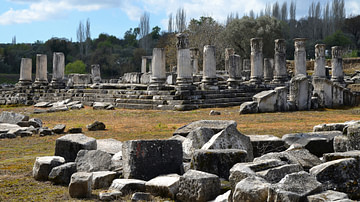
Image
The Temple of Hecate in Lagina, Caria
The Temple of Hecate in the Sanctuary of Hecate at Lagina in Caria (modern-day Turkey is dated to the last quarter of the 2nd century CE. It measured 21m x 28m and was built in the Corinthian order with 8 columns on its shorter sides and...
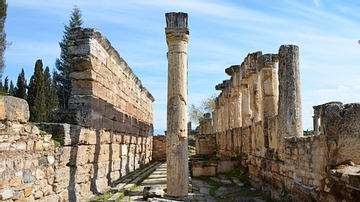
Image
Roman Latrine, Hierapolis
The latrine along Frontinus Street (colonnaded street) at Hierapolis in Phrygia (modern-day Turkey), built in the end of the 1st century CE. The room is divided longitudinally by a row of columns that supported a roof composed of travertine...
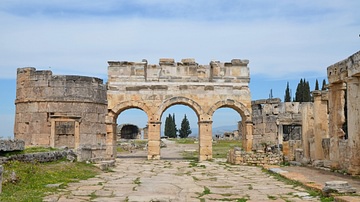
Image
Frontinus Gate in Hierapolis, Phrygia
The Frontinus Gate was the monumental entrance to the Roman city of Hierapolis (western Turkey). It is flanked by two round towers and dates to 84 or 86 CE on the basis of a dedication to Domitian on the gate's façade.
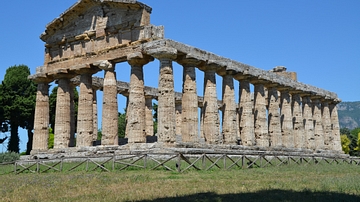
Image
Temple of Athena, Paestum
The Temple of Athena at Poseidonia/Paestum (Italy). The temple dates to the late 6th century BCE and consists of an external colonnade of 6 x 13 columns. It has elements of both Ionic and Doric architecture. The columns of the exterior colonnade...
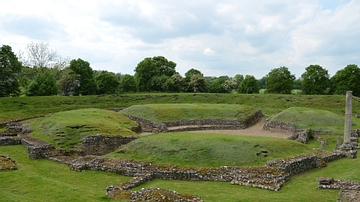
Image
The Roman Theatre of Verulamium, St Albans
The Roman Theatre of Verulamium (modern-day St Albans in Great Britain), built in about 140 CE, is unique. Although several towns in Britain are known to have had theatres, this is the only one visible today. It was discovered in 1869, the...
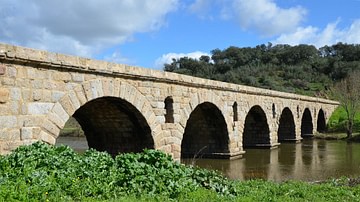
Image
Roman Bridge, Ponte da Vila Formosa, Portugal
Ponte da Vila Formosa in Portugal, a 116 meter long Roman bridge spanning over the river Seda. This bridge, dating to the late 1st century / early 2nd century CE, is one of the best-preserved bridges throughout the Iberian Peninsula. It was...
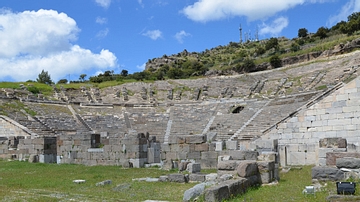
Image
The Theatre of Halicarnassos
The theatre of ancient Halicarnassos (modern-day Bodrum in Turkey), built in the 4th century BCE during the reign of King Mausolos and enlarged in the 2nd century CE. Is original capacity was 10,000.